Mind mapping is one of the best ways to capture your thoughts and bring them to life in visual form. They can also help you become more creative, remember more and solve problems more effectively. Whether you’re new to mind maps or just want a refresher, here’s all you need to know about this technique.
What Are Mind Maps?
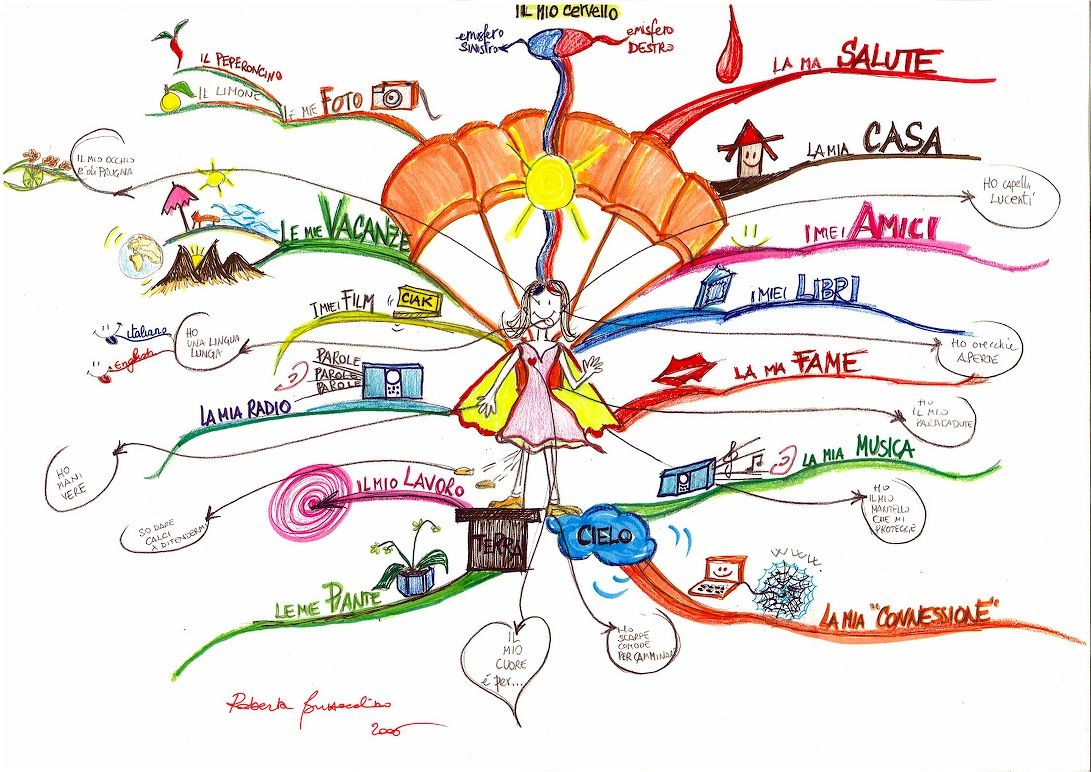
A mind map is basically a diagram that connects information around a central subject. I like to think of it like a tree, although it has more of a radial structure. In any case, at the center is your main idea, say, poetry, and the branches are subtopics or related ideas, such as types of poetry, famous poets and poetry publications. Greater levels of detail branch out from there and branches can be linked together.
Mind maps can be used for pretty much any thinking or learning task, from studying a subject (such as a new language) to planning your career or even building better habits. The Asian Efficiency blog offers a few unusual ways to use mind maps you might not have considered: create a knowledge bank (since mind mapping software lets you attach files and add links), solve problems (such as which credit card to use), create book summaries and set goals. They’re great for teams to use as well, for group brainstorming and interactive presentations.
Why Mind Maps Are Better Than Text Notes
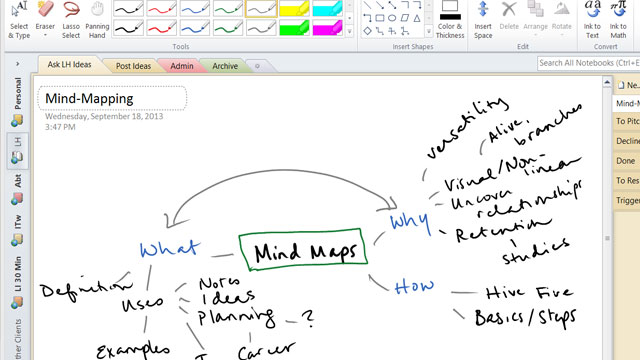
Mind maps can be more effective than other brainstorming and linear note-taking methods for a number of reasons:
-
It’s a graphical tool that can incorporate words, images, numbers and colour, so it can be more memorable and enjoyable to create and review. The combination of words and pictures is six times better for remembering information than words alone.
-
Mind maps link and group concepts together through natural associations. This helps generate more ideas, find deeper meaning in your subject, and also prompt you to fill in more or find what you’re missing.
-
A mind map can at once give you an overview of a large subject while also holding large amounts of information.
-
It’s also a very intuitive way to organise your thoughts, since mind maps mimic the way our brains think — bouncing ideas off of each other, rather than thinking linearly.
-
You can generate ideas very quickly with this technique and are encouraged to explore different creative pathways.
In one survey, executives who started using mind-mapping software said they were able to work significantly faster than before and juggle more complex projects through mind mapping. And research suggests mind mapping can improve learning and memory by 10 to 15 per cent versus conventional note-taking and studying techniques. It can also save you time, as the Learning Fundamentals blog writes:
A student recently said to me –
“I thought mind mapping would take a lot of time to do but actually it saves me time because I don’t have to read my notes over and over anymore”
Mind mapping helps you to study less because you understand the information at a deep level as a result of creating mind maps. If you just read your notes over and over chances are you’ll only understand the content at a superficial level and you’re going to waste a lot of time.
I use mind maps especially when I’m stuck on a problem or am facing writer’s block. (The image above is my starter mind map for this post, created in OneNote. Yeah, it’s not pretty, but that’s OK. OneNote seems to be ideal for mind mapping because even handwriting is searchable, you can embed other files, and, if you have a tablet PC, draw on the screen.) By starting out with the basic questions — who, what, why — and then following each thread, I’m more confident I’m not missing anything, and the ideas just seem to arise on their own.
Think of it this way. Imagine you were asked to write down as many uses for a brick as possible. Many people would just start listing all their ideas (building a wall, building a walkway). But what if you started from a broader perspective, such as thinking about the properties of a brick. It’s heavy, so you could use it as a paperweight, to hold down a garbage bag while raking, as an exercise weight, or to grill juicer chicken. It’s also thick, so you could use it to prop up a planter or as a doorstop. It’s red, it’s hard, it’s rectangular. That’s the magic of mind mapping: Once you start, the possibilities seem almost endless.
How to Get Started Mind Mapping
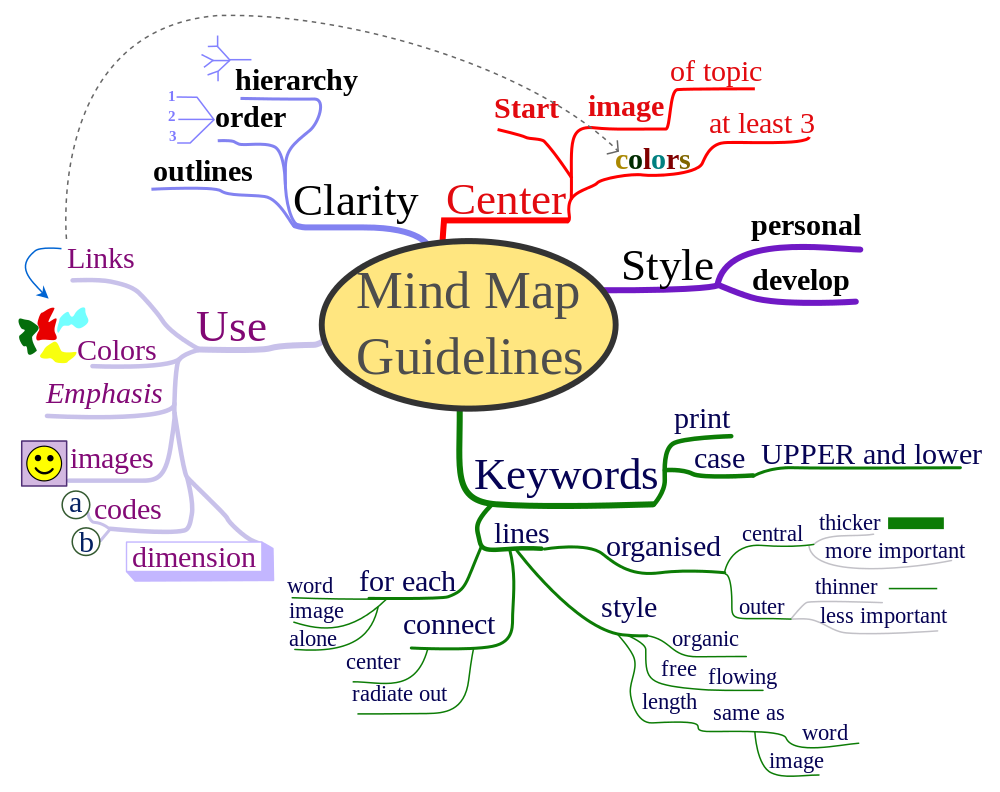
You can create a mind map on paper, in a drawing app on your tablet, or one of many popular mind-mapping software tools, such as XMind, our favourite mind-mapping software.
Pen and paper may be better because you can get your thoughts out more quickly and the act of drawing the branches out can aid recall. On the other hand, using the computer can make your mind maps searchable and include attachments. If you’re having trouble deciding from among the lots of digital tools to choose from, the Mind Mapping Software blog suggests you look for these five features: the ability to add links and attachments, add notes, filter content, export to other programs or formats, and use keyboard shortcuts.
Once you’ve chosen your tool, follow these seven steps and tips for making a mind map, from British author Tony Bunzan, who trademarked and popularised the term “mind map” in the 1960s:
Start in the CENTRE of a blank page turned sideways. Why? Because starting in the centre gives your Brain freedom to spread out in all directions and to express itself more freely and naturally.
Use an IMAGE or PICTURE for your central idea. Why? Because an image is worth a thousand words and helps you use your Imagination. A central image is more interesting, keeps you focused, helps you concentrate, and gives your Brain more of a buzz!
Use COLOURS throughout. Why? Because colours are as exciting to your Brain as are images. Colour adds extra vibrancy and life to your Mind Map, adds tremendous energy to your Creative Thinking, and is fun!
CONNECT your MAIN BRANCHES to the central image and connect your second- and third-level branches to the first and second levels, etc. Why? Because your Brain works by association. It likes to link two (or three, or four) things together. If you connect the branches, you will understand and remember a lot more easily.
Make your branches CURVED rather than straight-lined. Why? Because having nothing but straight lines is boring to your Brain.
Use ONE KEY WORD PER LINE. Why Because single key words give your Mind Map more power and flexibility.
Use IMAGES throughout. Why Because each image, like the central image, is also worth a thousand words. So if you have only 10 images in your Mind Map, it’s already the equal of 10,000 words of notes!
Or, well, here’s a mind map about mind mapping:
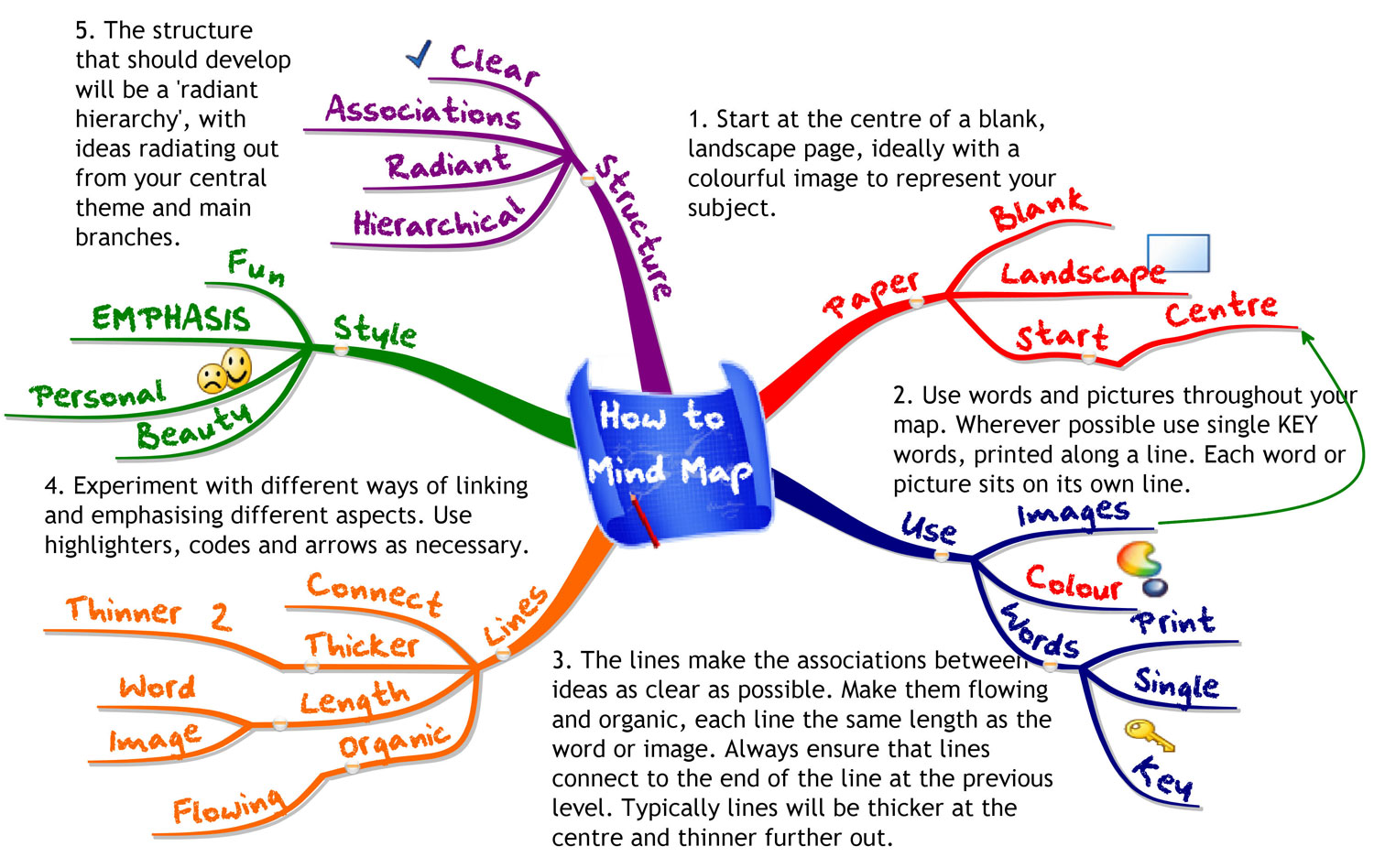
There’s no one standard way you have to create a mind map, however. If you want to use more than key word or add more text to a branch, that’s a personal choice. Go with what works effectively for you.
For further information and inspiration, check out these mind map galleries and other resources, which illustrate the many ways you can use mind maps in your life:
-
Mappio – mind map gallery
-
Mind Map Art – gallery of beautiful hand-drawn mind maps
- MindMappingStrategies – a blog about mind mapping
-
Mind-Mapping.org – one of the most extensive resources about mind mapping software
- Learning Fundamentals – tricks of the trade for mind mapping, particularly on paper
Photos by Solarseven (Shutterstock), Voland77, LoggaWiggler, Mind Mapping Site, Roberta Buzzacchino
.
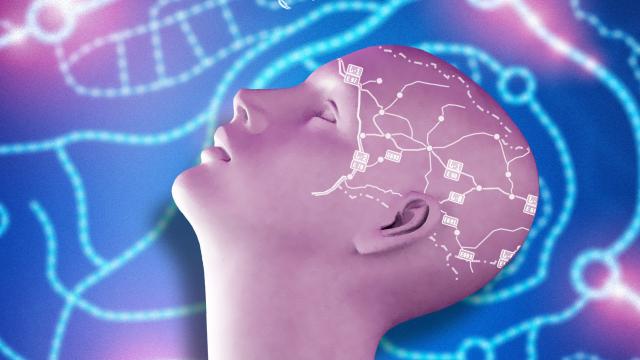
Comments